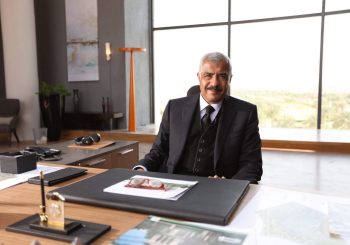Since the outbreak of conflict on 15 April, tensions between the Sudanese Armed Forces (SAF) and the paramilitary Rapid Support Forces (RSF) have resulted in the deaths of more than 12,000 civilians and the displacement of 6.6 million individuals.
Khartoum, the capital, has been engulfed in internecine warfare, causing widespread devastation.
The conflict originated from a power struggle between two once-allied generals: Abdel Fattah Al-Burhan, the commander-in-chief of the SAF, and Mohamed Hamdan Dagalo, also known as Hemedti, the RSF commander.
After almost nine months of conflict, the United Nations Under-Secretary-General Martin Griffiths highlighted a severe humanitarian crisis, with reports of rape and sexual violence adding to the chaos.
How the conflict unfolded
The conflict’s roots trace back to the uprising in April 2019, triggered by the deteriorating economic situation, leading toPresident Omar Al-Bashir’s ousting after a three-decade-long rule. A Transitional Military Council (TMC) was established to navigate the country’s regime transition.
Following a crackdown on ongoing protests in June 2019, the TMC engaged in negotiations with the Forces of Freedom and Change. This led to the signing of a detailed Political Agreement on 4 August, 2019, outlining a 39-month transition of power from the military to civilians.
The agreement proposed the formation of a Joint military-civilian Council of Sovereignty, with a military-appointed head for the initial 21 months and a civilian-appointed head for the remaining period. Al-Burhan assumed the military leadership of the Sovereignty Council.
Tensions escalated in September and October, with demonstrations both for and against the military, backed by tribal elements, culminating in a coup, on 25 October, 2021. Prime Minister Abdalla Hamdok, a civilian, was arrested, and the cabinet disbanded, with the military announcing its intent to proceed with elections scheduled for July 2023.
Protests forced the military to reinstate Hamdok and allow civil society to form a transitional government. In December 2022, to facilitate a democratic transition, Burhan, along with Hemedti and pro-democracy movements represented by the Forces of Freedom and Change, signed the political Framework Agreement.
Sponsored by the UN, the African Union, and the African Intergovernmental Authority on Development (IGAD), the deal aimed to establish a new constitution by April 6, 2023, alongside a transitional administration and a transfer of power to a civil government by April 11.
However, the Framework Agreement left one critical issue unresolved. The timing for integrating the RSF into the SAF and the resulting command structure of the SAF were ambiguous. Burhan sought a swift RSF absorption in two years, while Hemedti proposed a ten-year process. The generals’ partnership, seemingly supported the transition, revealing a hidden agenda to retain influence and avoid ceding power to a civil government.
The historical alliance between Burhan and Hemedti, once allies during the Darfur conflict in 2003, fractured amid power struggles. Hemedti’s role grew over the years from initially leading the paramilitary RSF and safeguarding the Bashir regime from military coups.
The war rages on
Despite peace talks in Jeddah in October and November, the RSF continued its territorial advancements, gaining control over four out of five Darfur states by the end of November. Simultaneously, Khartoum witnessed ongoing battles for strategic locations, intensifying the struggle for control.
Compounding the crisis, a cholera outbreak emerged, affecting Khartoum and other regions, with over 1,000 suspected cases reported. The Greater Khartoum area became a battleground, marked by airstrikes and shelling in densely populated areas.

Reports of rape and gang rape, primarily attributed to the RSF, surfaced in Khartoum and Darfur, raising concerns. The RSF and allied militias faced accusations of atrocities in Darfur, prompting an investigation by the International Criminal Court.
Persistent clashes between the SAF and RSF resulted in restricted access to entire neighborhoods in Khartoum, Omdurman, and Bahri, leading to severe shortages of food, water, and electricity.
Civilian displacement, especially in Jabal Awlia, persisted. Disease outbreaks, including cholera, acute watery diarrhoea, measles, dengue, and malaria, worsened Sudan’s humanitarian situation. The UN Refugee Agency described the conditions as “unimaginable,” with millions lacking access to essential services in the capital region, which remains the epicenter of displacement and fighting.
The conflict forced an estimated 6.6 million Sudanese to flee their homes, with children constituting half of the displaced population. Sudan now faces the largest displacement crisis globally, and the UN emphasizes the urgent need for a resolution. Despite several cease-fire attempts mediated by Saudi and US officials, the violence persists, exacerbating the suffering of the Sudanese people.
Sudan’s strategic location bordering the Red Sea, the Sahel region, and the Horn of Africa, coupled with its agricultural wealth, has attracted regional power plays, complicating the prospects for a successful transition to a civilian-led government. Geopolitical dimensions involving Russia, the US, Saudi Arabia, the United Arab Emirates, and other powers further contribute to the complexity of Sudan’s situation. The region’s volatility, strained relations with neighboring countries, and the influence of global powers underscore the challenges facing Sudan’s path to stability.






Comments (0)